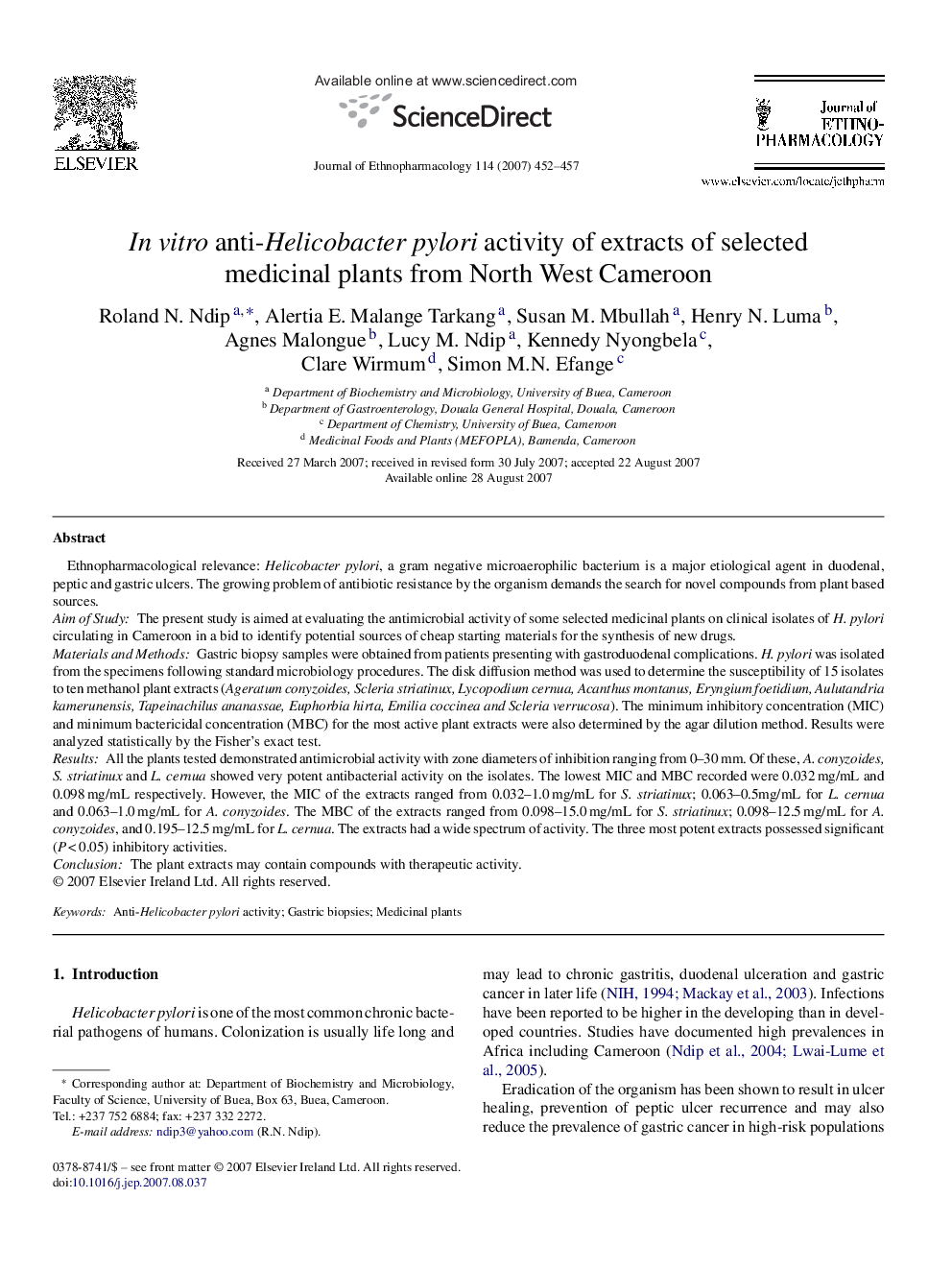| کد مقاله | کد نشریه | سال انتشار | مقاله انگلیسی | نسخه تمام متن |
|---|---|---|---|---|
| 2547810 | 1124070 | 2007 | 6 صفحه PDF | دانلود رایگان |

Ethnopharmacological relevance: Helicobacter pylori, a gram negative microaerophilic bacterium is a major etiological agent in duodenal, peptic and gastric ulcers. The growing problem of antibiotic resistance by the organism demands the search for novel compounds from plant based sources.Aim of StudyThe present study is aimed at evaluating the antimicrobial activity of some selected medicinal plants on clinical isolates of H. pylori circulating in Cameroon in a bid to identify potential sources of cheap starting materials for the synthesis of new drugs.Materials and MethodsGastric biopsy samples were obtained from patients presenting with gastroduodenal complications. H. pylori was isolated from the specimens following standard microbiology procedures. The disk diffusion method was used to determine the susceptibility of 15 isolates to ten methanol plant extracts (Ageratum conyzoides, Scleria striatinux, Lycopodium cernua, Acanthus montanus, Eryngium foetidium, Aulutandria kamerunensis, Tapeinachilus ananassae, Euphorbia hirta, Emilia coccinea and Scleria verrucosa). The minimum inhibitory concentration (MIC) and minimum bactericidal concentration (MBC) for the most active plant extracts were also determined by the agar dilution method. Results were analyzed statistically by the Fisher's exact test.ResultsAll the plants tested demonstrated antimicrobial activity with zone diameters of inhibition ranging from 0–30 mm. Of these, A. conyzoides, S. striatinux and L. cernua showed very potent antibacterial activity on the isolates. The lowest MIC and MBC recorded were 0.032 mg/mL and 0.098 mg/mL respectively. However, the MIC of the extracts ranged from 0.032–1.0 mg/mL for S. striatinux; 0.063–0.5mg/mL for L. cernua and 0.063–1.0 mg/mL for A. conyzoides. The MBC of the extracts ranged from 0.098–15.0 mg/mL for S. striatinux; 0.098–12.5 mg/mL for A. conyzoides, and 0.195–12.5 mg/mL for L. cernua. The extracts had a wide spectrum of activity. The three most potent extracts possessed significant (P < 0.05) inhibitory activities.ConclusionThe plant extracts may contain compounds with therapeutic activity.
Journal: Journal of Ethnopharmacology - Volume 114, Issue 3, 3 December 2007, Pages 452–457